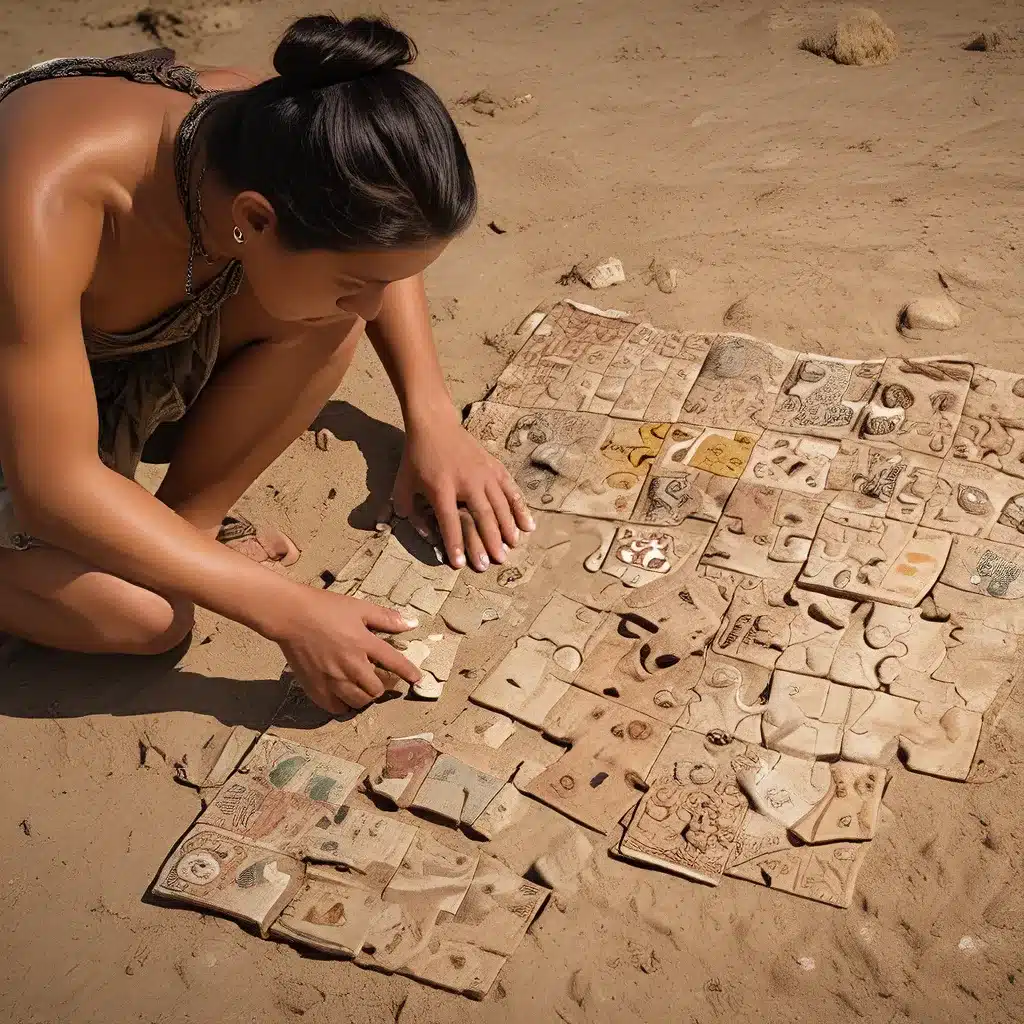
The study of ancient civilizations and their cultural legacies has long captivated the minds of scholars and enthusiasts alike. From the majestic pyramids of Egypt to the enigmatic Nazca lines of Peru, the remnants of these bygone eras offer a tantalizing glimpse into the complex tapestry of human history. As researchers continue to unravel the mysteries of the past, new discoveries and theories are constantly emerging, shedding light on the diverse cultural developments that have shaped our understanding of the prehistoric world.
Unveiling the Secrets of Ancient Civilizations
One of the most fascinating aspects of archaeological research is the opportunity to explore the material remains of long-lost societies. By carefully excavating and analyzing artifacts, structures, and other physical evidence, archaeologists are able to piece together the intricate stories of how these civilizations lived, thrived, and ultimately, in many cases, declined.
Take, for example, the Indus Valley Civilization, a thriving urban center that flourished in present-day Pakistan and India from approximately 3300 to 1300 BCE. Through the study of its well-planned cities, advanced sanitation systems, and sophisticated trade networks, researchers have gained valuable insights into the technological and organizational prowess of this ancient culture. The discovery of seals, figurines, and other artifacts has also provided clues about the religious beliefs and social structures that governed daily life in the Indus Valley.
Similarly, the Maya civilization, which reached its peak between 250 and 900 CE in Mesoamerica, has captivated the imaginations of scholars for centuries. The Maya were renowned for their impressive architectural achievements, such as the towering pyramids and intricate palaces found at sites like Chichen Itza and Tikal. Moreover, the deciphering of the Maya hieroglyphic writing system has unlocked a treasure trove of information about their sophisticated calendar, astronomical knowledge, and complex political and social hierarchies.
Indus Valley Civilization and Maya civilization are just two examples of the many ancient cultures that have been the subject of extensive archaeological research and analysis. Each of these civilizations has left an indelible mark on our understanding of the rich tapestry of human history.
Emerging Theories and Interdisciplinary Collaboration
As the field of archaeology continues to evolve, researchers are increasingly turning to interdisciplinary approaches to uncover the mysteries of the past. By collaborating with experts from fields such as anthropology, geology, and genetics, archaeologists are able to draw upon a diverse range of knowledge and methodologies to gain a more comprehensive understanding of ancient cultural developments.
One such example is the ongoing research into the peopling of the Americas, a topic that has long been a subject of debate and controversy. Genetic studies, combined with archaeological evidence and linguistic analysis, have shed new light on the complex migratory patterns and cultural interactions that led to the settlement of the Americas thousands of years ago. Similarly, the use of advanced imaging techniques and geospatial analysis has allowed researchers to identify and map previously undiscovered archaeological sites, providing valuable clues about the distribution and interconnectivity of ancient civilizations.
Genetic studies and advanced imaging techniques are just two examples of the innovative approaches that are transforming the field of archaeology. As researchers continue to push the boundaries of their disciplines, we can expect to see new theories and discoveries that challenge our existing understanding of the past and shed light on the rich cultural diversity that has shaped the human experience.
Preserving and Interpreting Cultural Heritage
In addition to the fascinating discoveries and theories emerging from the field of archaeology, the preservation and interpretation of cultural heritage has become a critical priority for scholars, policymakers, and the general public alike. As the world’s cultural treasures face threats from environmental degradation, armed conflicts, and the illegal trade in antiquities, the need for coordinated international efforts to safeguard these irreplaceable assets has never been more pressing.
The EU-funded IPERION CH project, for example, is working to establish a European research infrastructure dedicated to the conservation, interpretation, and management of Europe’s unique cultural heritage. By integrating the efforts of national research institutions and connecting experts from across the continent, the project aims to strengthen Europe’s reputation in the field of heritage science and ensure that its cultural treasures receive the attention and protection they deserve.
IPERION CH project is just one example of the global initiatives underway to safeguard the world’s cultural heritage. As we continue to uncover the secrets of the past and deepen our understanding of ancient civilizations, it is crucial that we also invest in the preservation and interpretation of these invaluable resources, ensuring that they can be shared and appreciated by generations to come.
Conclusion: Embracing the Complexity of the Past
The study of prehistoric cultural developments is a complex and multifaceted endeavor, one that requires the collaboration of experts from diverse fields and the careful preservation and interpretation of cultural heritage. As researchers continue to push the boundaries of their disciplines, we can expect to see new theories and discoveries that challenge our existing understanding of the past and shed light on the rich tapestry of human history.
Whether you are a scholar, a history enthusiast, or simply someone with a curiosity about the ancient world, the ongoing exploration of prehistoric cultural developments offers a window into the resilience, ingenuity, and diversity of the human experience. By embracing the complexity of the past and investing in the preservation of our cultural heritage, we can ensure that the stories and legacies of these long-lost civilizations will continue to captivate and inspire us for generations to come.


